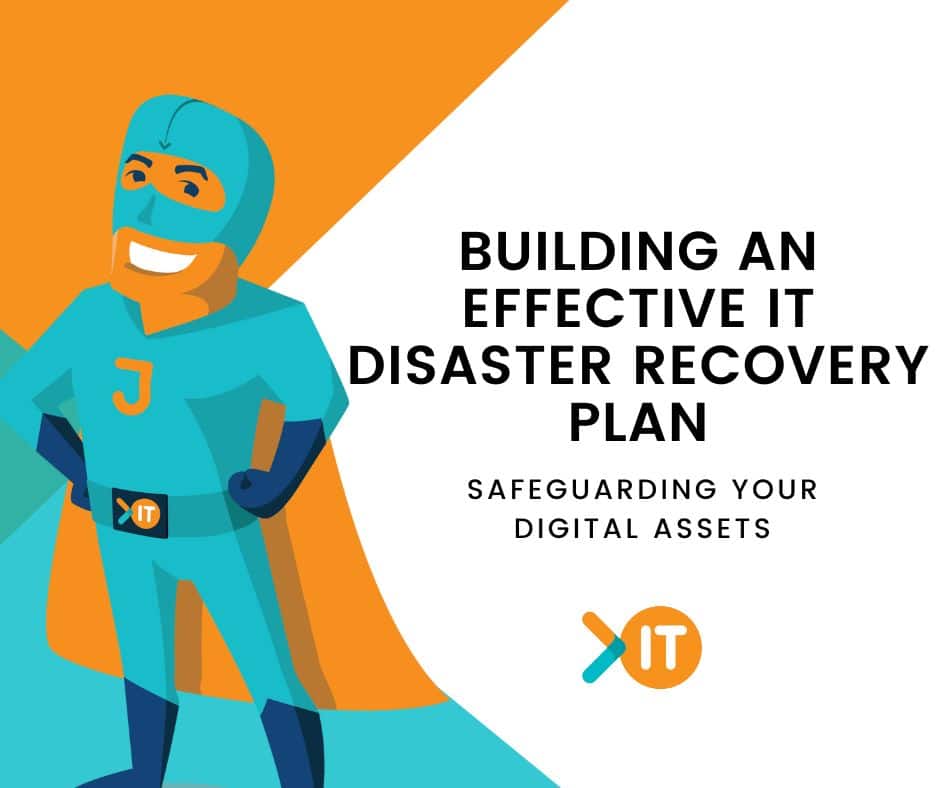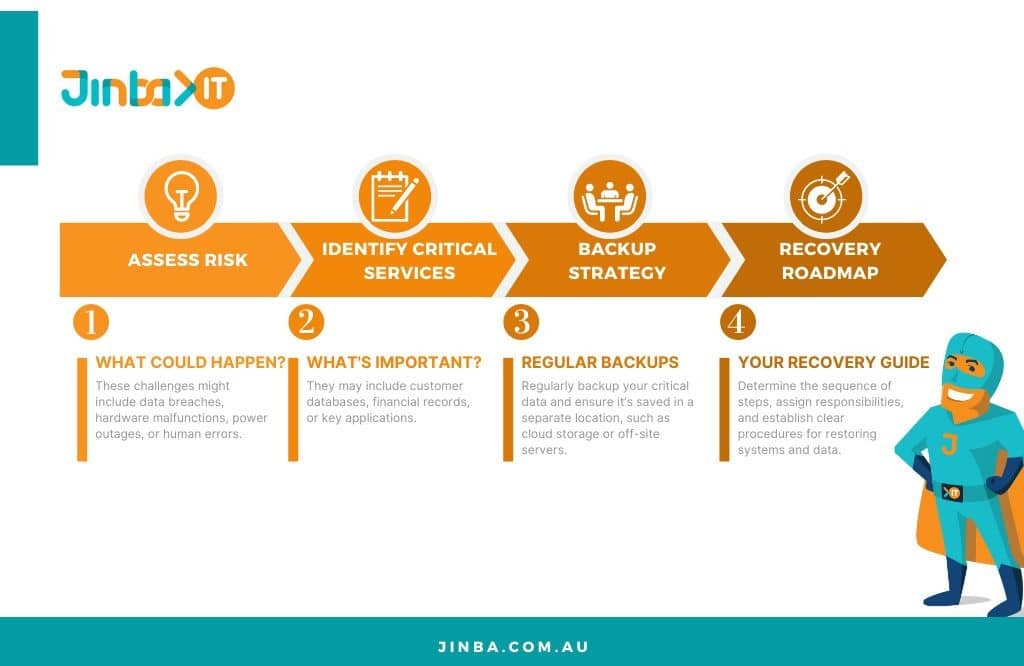Ensuring Business Continuity in the Digital Age
In our tech-driven world, businesses and organisations heavily rely on digital systems.
But what happens when disaster strikes?
That’s where an IT disaster recovery plan comes into play.
A regular addition to a managed IT services plan, we’ll explore the key components of an effective IT disaster recovery plan in a way that’s hopefully easy to understand – even if you’re not some kind of tech wizard.
Let’s dive in and learn how to safeguard your digital assets!

Understanding IT Disaster Recovery Plans
Let’s start by understanding what an IT disaster recovery plan is all about. Think of it as your safety net, a roadmap that outlines the steps to take when things go wrong.
It covers various scenarios, such as cyber attacks, hardware failures, or natural disasters. Essentially, it ensures that you can recover and restore your digital operations as quickly as possible.
We created an infographic with a basic overview of what’s involved and what to think about in a disaster recovery plan – feel free to download and share it around!

Assessing the Risks & Impacts
Before we proceed, it’s important to assess the risks you may face. Think of it as identifying potential challenges that could disrupt your systems.
These challenges might include data breaches, hardware malfunctions, power outages, or human errors. Maybe you work somewhere prone to natural disasters.
By recognising these risks, you can better prepare and minimise their impact.
Identifying Critical Components
Every organization has its core elements that are crucial for its operations. In your IT disaster recovery plan, identify and prioritise these critical components.
They may include customer databases, financial records, or key applications.
By focusing on protecting and recovering these essential elements, you can ensure that your business can continue operating in times of crisis.
Establishing a Reliable Backup Strategy
Now let’s talk about backing up your data – a fundamental aspect of any IT disaster recovery plan.
Think of it as creating copies of your important files and storing them securely. Regularly backup your critical data and ensure it’s saved in a separate location, such as cloud storage or off-site servers. This way, even if your primary systems fail, you can retrieve your data and resume operations with minimal downtime.
Crafting a Recovery Roadmap
It’s time to create a detailed recovery roadmap within your IT disaster recovery plan.
Imagine it as a step-by-step guide that outlines the actions to take when disaster strikes.
Determine the sequence of steps, assign responsibilities, and establish clear procedures for restoring systems and data. Having a well-defined roadmap will help your team act quickly and efficiently during challenging times.
Testing and Fine-Tuning
Before you declare your plan ready, it’s crucial to test its effectiveness. Conduct regular tests and simulations to identify any weaknesses or gaps.
This process is akin to practicing emergency drills to ensure everyone knows their roles and responsibilities. Through testing and fine-tuning, you can improve the readiness of your IT disaster recovery plan.
Communication and Collaboration
During a crisis, effective communication is key to minimise confusion and enable swift action. Your IT disaster recovery plan should include a communication strategy.
Establish a protocol for notifying key personnel, stakeholders, and customers.
Keep contact information updated and ensure everyone knows how to access it in case of emergencies.
Open lines of communication will facilitate a coordinated response.
Documentation and Maintenance
Finally, document your IT disaster recovery plan meticulously. Include detailed instructions, contact information, and any specific procedures necessary for recovery.
But remember, this is not a set-it-and-forget-it document.
Regularly review and update your plan to reflect changes in your systems, infrastructure, and personnel. Incorporate lessons learned from real incidents to enhance its effectiveness.
Ready to Face the Unexpected
Remember, an IT disaster recovery plan requires ongoing attention and maintenance. Stay vigilant, keep it up to date, and conduct periodic tests to ensure its effectiveness. By doing so, you’ll be well-prepared to face any challenges that come your way and keep your digital operations running smoothly.
Not sure where to start on your IT disaster recovery plan?
We’re here to help! Get in touch with us or book a call to chat more about how you can imrpove your work day.
